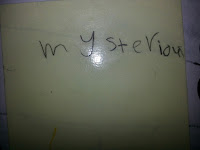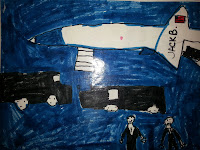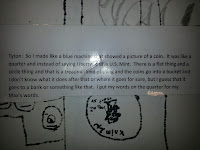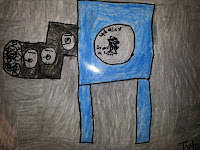In this post I will describe the Sentence-Phrase-Word thinking routine. It is a routine that helps learners engage meaningfully with a text with a focus on capturing “what speaks to them”. It also calls for them to justify their choices which makes it a useful springboard into a speaking activity.
Step 1
After reading a text ask students to identify:
-
- a sentence that was important, meaningful to them
- a phrase that moved them
- a word that struck them as powerful
Students can work individually, in pairs or in groups. It depends on how many ideas you want to generate. They can first take notes of their selections and the reason behind them before sharing them with the rest of the class. There are actually no right or wrong answers since their choices of sentences, phrases, and words will reflect their own experience.
Step 2
Students can present and share their selections of sentences/phrases/words. Sharing can be done a) in pairs or small groups and/or b) in the form of a plenary discussion. Use the board to record their choices so that everyone can see and comment on them. Encouraging the rest of the class to take notes of their classmates’ selections is also an add-on.
Step 3
After sharing invite students to reflect on the discussion. They can a) identify common themes that have emerged from their responses and b) the implications that lie behind.
Step 4
If possible, post all answers in the classroom and provide some time for students to think again on their classmates’ sentences/phrases/words. This will contribute to a better personal and collective understanding of the text.
Classroom experience
I have tried this routine on two occasions so far. The first was with the topic of friendship where I used a short extract from Hans Christian Andersen’s The Ugly Duckling. After reading aloud the extract to the children, they silent read it in small groups while I provided groups with some help on vocabulary where necessary. Groups then worked on the routine. The ideas shared in class were:


The second time was with Shel Silverstein’s The Giving Tree while working on the topic of deforestation. We first watched a video rendering and went through a ppt slide presentation of the book. Then, students worked in pairs, with a story hand-out and chose their sentences/phrases/words. Their responses:
Things to consider: An issue I had to deal with was how to explain to my 12 year old students, 2 multi-level (pre-intermediate/intermediate) groups the difference between sentence and phrase. I gave them an example showing the difference between sentence and phrase like so:
Sentence (begins with a capital, ends in a full stop, period, question mark or exclamation mark, expresses a complete thought): This is a sentence as you can see.
Phrase (part of a sentence, does not express a complete thought): as you can see
The routine can also work nicely with just two of the three stems (sentence/word).
References
The Ugly Duckling, Art in the English Class project
The Giving Tree, Art in the English Class project
Ritchhart, R, Church, M and Morrison, K (2011) Making Thinking Visible: How to Promote Engagement, Understanding, and Independence for All Learners. San Francisco: Jossey-Bass. pp. 207-213.
A site on art, thinking and creativity in ELT
The Sentence Phrase Word routine helps learners to:
- engage with and make meaning from text with a particular focus on capturing the essence of the text
- engage in enhanced discussion while drawing attention to the power of language
Sentence_Phrase_Word.pdf
Sentence_Phrase_Word_Template.pdf
Documenting Thinking
In this routine, students are generally sharing their thinking at each step along the way before moving on to the next one. This allows the class to build on the group’s thinking and often results in richer discussions.
It can be very useful to document the thinking at each stage. If you are wanting to document thinking as your students engage with the routine Sentence Phrase Word then this template may be useful.
Here are some examples of how this routine can be used across the curriculum:
- English: examining a text and looking at the key message
3_STW & SPW.VOB
Back to Tug-Of War routine
Go to Peel The Fruit routine
A routine for capturing what a reader found meaningful from a text.
The Sentence-Phrase-Word thinking routine helps learners to engage with and make meaning from text with a particular focus on capturing the essence of the text or “what speaks to you”. The power of the routine lies in the discussion of why a particular word, a single phrase, and a sentence stood out for each individual in the group as the catalyst for rich discussion. Learners must justify their responses and it sets the stage for considering themes, implications, predictions, and lessons to be drawn.
How to use the routine
Online instructions
Refer to pages 207-213 in the book Making Thinking Visible: How to Promote Engagement, Understanding, and Independence for All Learners.
Notes
The length of a text is important in this routine. If it is too long, students will just skim it. To use this routine effectively, choose a piece of text that engages – a section from a book, newspaper article, poem, or even a scene from a play.
Synonym: arrangement, habit, method, order, system. Similar words: routinely, put in, cut in, cut into, continent, clandestine, abstinence, round and round. Meaning: [ruː’tɪːn] n. 1. an unvarying or habitual method or procedure 2. a short theatrical performance that is part of a longer program 3. a set sequence of steps, part of larger computer program. adj. 1. occurring at fixed times or predictable intervals 2. found in the ordinary course of events.
Random good picture Not show
1) A routine scan revealed abnormalities in the foetus.
2) You will need to have a routine biannual examination.
3) Make exercise a part of your daily routine.
4) There was little deviation from his usual routine.
5) A routine scan revealed abnormalities in the fetus.
6) The problem was discovered during routine monitoring.
7) John’s departure had upset their daily routine .

9) I spent the afternoon doing routine paperwork.
10) The players had to change their daily routine and lifestyle.
11) Routine maintenance of the garden consists of keeping weeds under control.
12) His routine work is to rub the coal through a sieve.
13) There’s no set/fixed routine at work — every day is different.
14) The security men changed their usual routine and collected the money at a different time.
15) Will you go to the routine meeting instead of me?
16) It is everyday routine.
17) I’ve got a lot of routine paperwork to get through.
18) Police conducted a routine search of all the houses in the area.
19) He missed the routine of army life.
20) They found invasive cancer during a routine examination.
21) You mustn’t worry. These are just routine enquiries.
22) His daily routine is absolutely sacred to him.
23) Try to fit some regular exercise into your daily routine.
24) We are trying to get the baby into a routine for feeding and sleeping.
25) I choose for my subject faith wrought into life, apart from creed or dogma. By faith I mean a vision of good one cherishes and the enthusiasm that pushes one to seek its fulfillment regardless of obstacles. Faith is a dynamic power that breaks the chain of routine and gives a new, fine turn to old commonplaces. Faith reinvigorates the will, enriches the affections and awakens a sense of creativeness.
26) We clean and repair the machines as a matter of routine.
27) She had decided she must go on as usual, follow her normal routine,[http://sentencedict.com/routine.html] and hope and pray.
28) It took me a week to settle into a routine.
29) I arrive at nine o’clock, teach until twelve thirty and then have a meal; that is my morning routine.
30) They moved the furniture back to practise their dance routine.
More similar words: routinely, put in, cut in, cut into, continent, clandestine, abstinence, round and round, utilize, utility, execution, executive, evolution, pollution, resolution, diminutive, prosecution, contribution, distribution, institution, consecutive, constitution, route, line, fine, pine, revolutionary, institutional, tiny, get in.
Smith / Willett 2nd Grade
Thinking Routine: Sentence-Phrase-Word
Connect: “Sentence-Phrase-Word,” is a routine that is text based and used for capturing the essence of the reading as well as identifying themes. Kids were deeply engrossed in their Non-Fiction research projects and were reading a ton of NF informative articles based on a topic of interest chosen individually. The kids were in the technical aspect of learning and were digging through information they could use to help them answer their essential questions for their project. Having a ton of information at the forefront of the mind for weeks upon weeks, I decided to try to mix things up a bit by using the Sentence-Phrase-Word thinking routine. I thought it would really define the core information each child was gaining from their research. It was a great synthesis idea as well as evaluative for me as an educator.
What I did:
Kids were given about a week to investigate NF text articles based on a specific topic of interest. They spent time reading, evaluating, and coding tracks of their thinking on sticky notes inside the articles. They shared some of their learnings and discoveries with peers in the class throughout the week. Then, I had the kids come together as a group and asked them to draw a picture of something that really excites them about their topic. After the drawings were completed, students were asked to identify: a sentence that is meaningful to them or captures the heart of the reading; a phrase that spoke to them in some way; or a word that captured their attention or was powerful in some way or that connects the picture to the writing and the readings done prior. The power of this routine is in the justification, either through writing or discussion, about why the children chose the way they did. Kids placed the sticky notes on the back of their drawing and shared their thoughts with kids at their working tables. Kids described their pictures and why they chose the details in their drawings as well as shared their S-P-W. It was a very insightful thinking activity that allowed me as an educator to evaluate how the NF research was going for the kids and which kids might need some extra instruction. I could also collaborate with my partner teacher to have the kids practice this same routine in the weekly Scholastic News in Science and Social Studies.
 |
| Student’s word choice |

 |
| Student’s thoughts on why he chose his drawing and why he connected his word / phrase. |

Extend:
After the initial activity with the S-P-W, I thought it would be a great idea to have the kids do another drawing at the end of the NF research project to see how their thinking might have changed. The kids worked on their drawings with the instruction of “Show your thoughts through careful picture choices and details in order to connect with your new S-P-W. I decided to use both pictures and writings as the front and back covers to the kids’ projects. Interestingly enough, most of the kids showed dramatically deeper level thinking when it came to the pictures and thoughts. Kids skills increased and their meaningful connections were extremely strong the 2nd time around.
Challenge:

I added another spin on this activity using leaf art created by the students and had them include the S-P-W on the front of the art to help connect to this routine on a higher level with a lot of choice words instead of just one.


